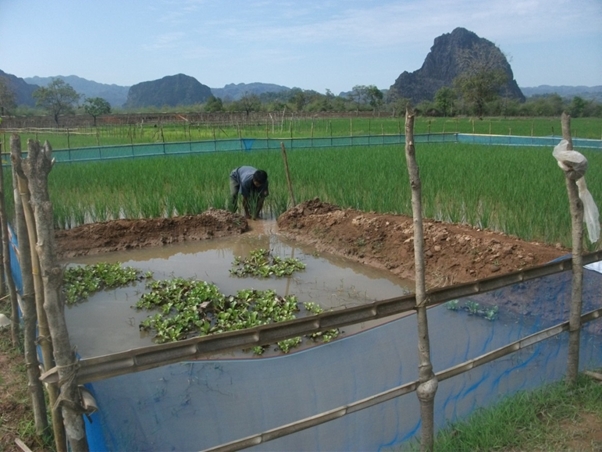The International Hydropower Association World Congress is running this week in Sarawak, Malaysia on the theme of Advancing Sustainable Hydropower. Research by IWMI and partners as part of the CGIAR Challenge Program on Water and Food is looking at the livelihood impacts of dam development in Laos.
The Mekong region of South East Asia is on the verge of a hydropower boom. An additional 11 new dams alone are planned for the Lower Mekong basin; with the expectation that cheap, plentiful electricity will catalyze economic development in a rapidly transforming corner of Asia.
But globally large dams have long been controversial. Whilst their benefits are often significant, their construction inevitably leads to the displacement and involuntary resettlement of communities. Sometimes this can be on a vast scale. China’s Three Gorges Dam displaced an estimated 1.5 million people.
So the big question for the Mekong countries is whether the proposed expansion of hydropower can be managed in a way that minimizes the disruption to local communities, and ensures that they share in the benefits that the dam will bring. And that means much more than simple offering alternative housing or other compensation. A persistent problem of involuntary displacement is that people are unable to engage in their original livelihood activities. For example, they may lose access to cultivable land, grazing spaces for cattle and fishing grounds.
But both researchers and developers are now becoming more proactive in dealing with the livelihood impacts that are often linked with community relocation and resettlement. A good example is the Challenge Program for Water and Food (CPWF) project on Optimizing Reservoir Management for Livelihoods in the Mekong Basin led by researchers from the International Water Management Institute (IWMI) and working in close collaboration with WorldFish and national partners such as the Lao National Agriculture and Forestry Research Institute (NAFRI). In each of the countries, Lao PDR, Vietnam and Cambodia, the project has one study site where the research team is exploring different strategies for communities to improve their livelihoods by taking advantage of agricultural, fisheries and other opportunities offered by water infrastructure development. 
In the Lao site, as part of the project the researchers conducted a survey among communities to identify options for livelihood diversification in the Phumakneng Relocation site, downstream of Nam Gnouang Dam, located on a tributary of the Nam Theun River in Laos (see map). In the past rice farming in the area was characterized by the traditional rain fed paddy field system. But given the increased incidences of flood damage to rice crop upon construction of the hydropower dam, the Theun Hinboun Power Company (THPC) supported the development of an irrigation system for dry season rice.
The research team further identified the introduction of a rice-fish integrated farming system (see box) as an option for livelihood diversification; potentially contributing to better food security and improved nutrition.
A detailed community consultation was carried out using a range of participatory tools and methods that had been suitably adapted to the local context in Phumakneng. “The community members showed interest and willingness to switch from rice monoculture to rice-fish and a total of 15 farmers volunteered in participating in a trial”, says IWMI’s Sonali Senaratna Sellamutta. “When we presented our findings and recommendations from our feasibility study to THPC they agreed to support a pilot study financially.”
The pilot project kicked off in October 2012 spanning for a period of 6 months until March 2013. Follow-up meetings held by the researchers with the farmers who volunteered and THPC staff in end of March 2013 highlighted that not only were all the participants willing to continue the practice, but also that there was a growing interest among a notable number of other households in the community to take up the practice as well.
“Based on the success of the pilot trials THPC have committed to continue supporting the farmers in Phumakneng and are also proposing to upscale this practice and promote integrated rice-fish systems in wet season rice farming areas as well”, says Jharendu Pant from WorldFish, a member of the research team who provided the technical advice for this pilot. “The outcome shows how a combination of having good relations with the private sector and credible research results can lead to private sector support of piloting livelihood-enhancement activities”, says Senaratna Sellamuttu.
For more information:
Project Contact: Sonali Senaratna Sellamuttu s.senaratnasellamuttu@CGIAR.ORG
Integrated Fish FarmingThe principle of integrated fish farming involves farming of fish along with agricultural crops or even livestock. Rice-fish integrated farming differentiates between two methods: simultaneous culture cultivates rice and fish together in the same paddy field, whereas rotation culture cultivates fish and rice in turns. Rice-fish culture has several benefits, such as economical utilization of land, enhanced rice yields, additional income and less fertilizer use. It is also contributes to improved nutrition of the rural poor as it provides a relatively cheap form of protein. |
 A farmer who has volunteered to participate in the rice-fish integrated pilot preparing a refuge for fish within the plot.
A farmer who has volunteered to participate in the rice-fish integrated pilot preparing a refuge for fish within the plot.A net is fixed around the plot to prevent fish escaping.
Photo credit: Jharendu Pant

